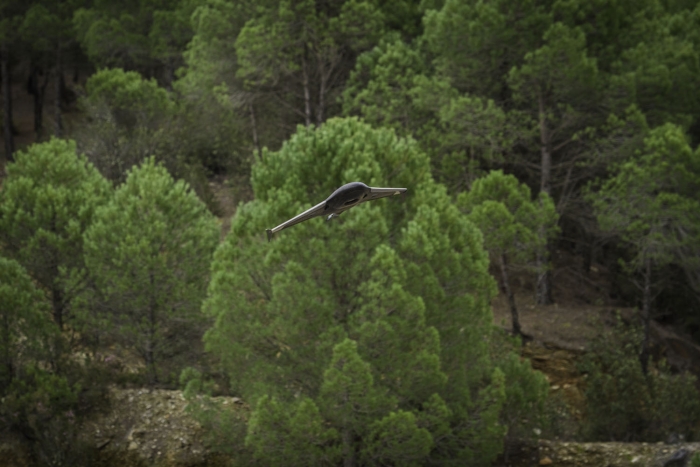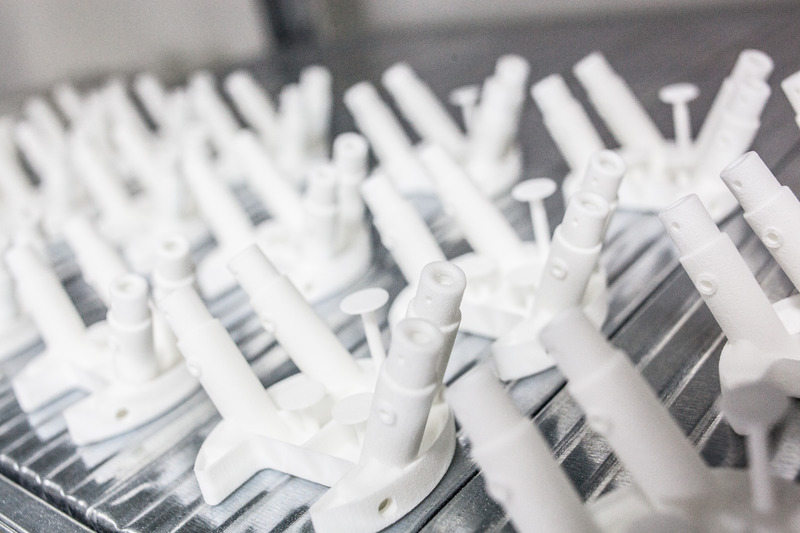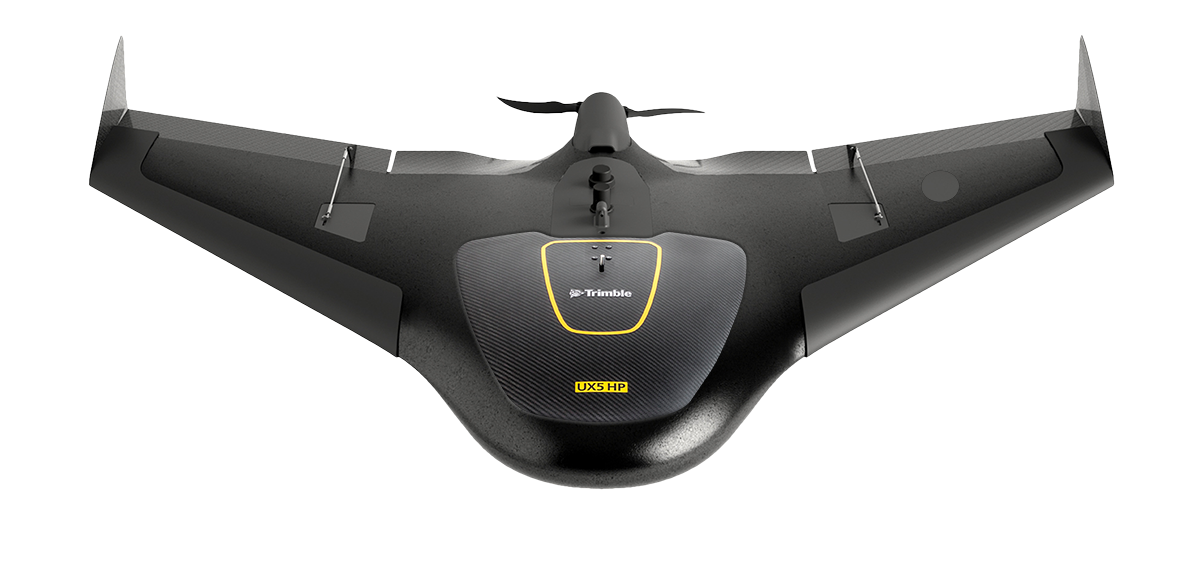Rapid Prototyping through Materialise OnSite
Gatewing first came into contact with Materialise through Materialise OnSite, where they ordered prototypes for the Gatewing X100 drone’s body and frame. With 3D-printed prototypes, using Laser Sintering and FDM, Gatewing could assemble a replica that looked close and behaved identically to the finished product. Once the design was finished and approved, masters were printed in Stereolithography and turned into molds for Vacuum Casting. The final result, the Gatewing X100, was the world’s fastest and easiest to use remote sensing solution.
Co-Creation: Faster Production, Improved Design
Although vacuum casting gave Gatewing a certain degree of production flexibility, both Gatewing and the engineering team at Materialise were eager to explore if Additive Manufacturing could be an even better production method.

“We came up with new ideas to improve the design by fully using the design benefits offered by 3D Printing and come up with a lighter yet stronger frame.”
Maarten Durie, Product Manager, Trimble
Lighter frames would translate, crucially, to longer flight time per battery recharge. “One of the first ideas was to look into the joints that keep the frame together. In the first iteration of the drone, these joints were simply over-molded in Vacuum Casting based on the 3D-printed masters. But a direct production in Additive Manufacturing would not only mean a faster production process, it would also mean a smaller gap between design changes.”
Printing the joints is one thing, but manually applying the glue during frame assembly could compromise the consistency. How do you ensure that each joint uses the right amount of glue, for optimal adhesion and minimal leakage? So Trimble and Materialise engineers worked on integrating clever glue channels into the frame design, ensuring optimal glue spread.
Certified Additive Manufacturing: Exceeding Standards
Additive Manufacturing offers Trimble a streamlined, fast production process and vast design freedom to improve the drones’ design without having to invest in a new mold for each new iteration. When Additive Manufacturing takes over the production line of a design that used to be milled and molded, design freedom is a great plus but not enough by itself. It also has to live up to the established standards of the industry: strict tolerances, reliability on quality, and traceability of each produced part. The Trimble drones require a certified manufacturing process, with attention to both optimized hardware as well as dedicated monitoring software and comprehensive quality checks. So even RapidFit+, a Materialise daughter company specialized in customized jigs for the automotive industry, stepped in to design a custom calibrated jig for precision assembly of the drone.
“Materialise delivers the drone frames completely assembled, even including parts like cables which aren’t 3D-printed. That saves us valuable time. By relying on Materialise for the assembly, we get more time to focus on design and product development without having to worry about production. With a workflow as smooth as this, we’ve completed over 500 frames this year,”
says Maarten Durie at Trimble.


